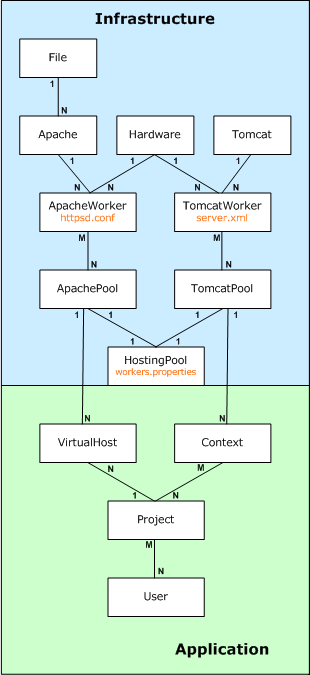Organization

Lokahi manages both infrastructure and applications; the two are intertwined, but can be considered more or less separately for the purposes of explanation.
The application side is relatively simple; projects have virtual hosts and contexts. Users are assigned to applications.
The diagram at left shows how Lokahi organizes the infrastructure in order to manage it. Installations of Apache and Tomcat, as well as single servers, are considered separately. Workers are unique combinations of instantiations of Apache and Tomcat (Apache installations and JVMs) and servers. Note the relationship: an installation of Apache or Tomcat can have many workers, but each worker is related to only one installation of Apache or Tomcat, and one piece of hardware. (This may sound a little confusing, but consider that an installation of Tomcat can have many JVMs defined, but any given JVM will only be associated with one specific installation of Tomcat.) Thus, a JVM replicated across three clustered servers is actually treated as three separate Tomcat Workers by Lokahi.
A grouping of workers is a Pool. Thus, one JVM in a clustered environment, which therefore exists once for each server, is a Tomcat Pool.
Lastly, the combination of one Apache Pool and one Tomcat Pool creates a Hosting Pool.

